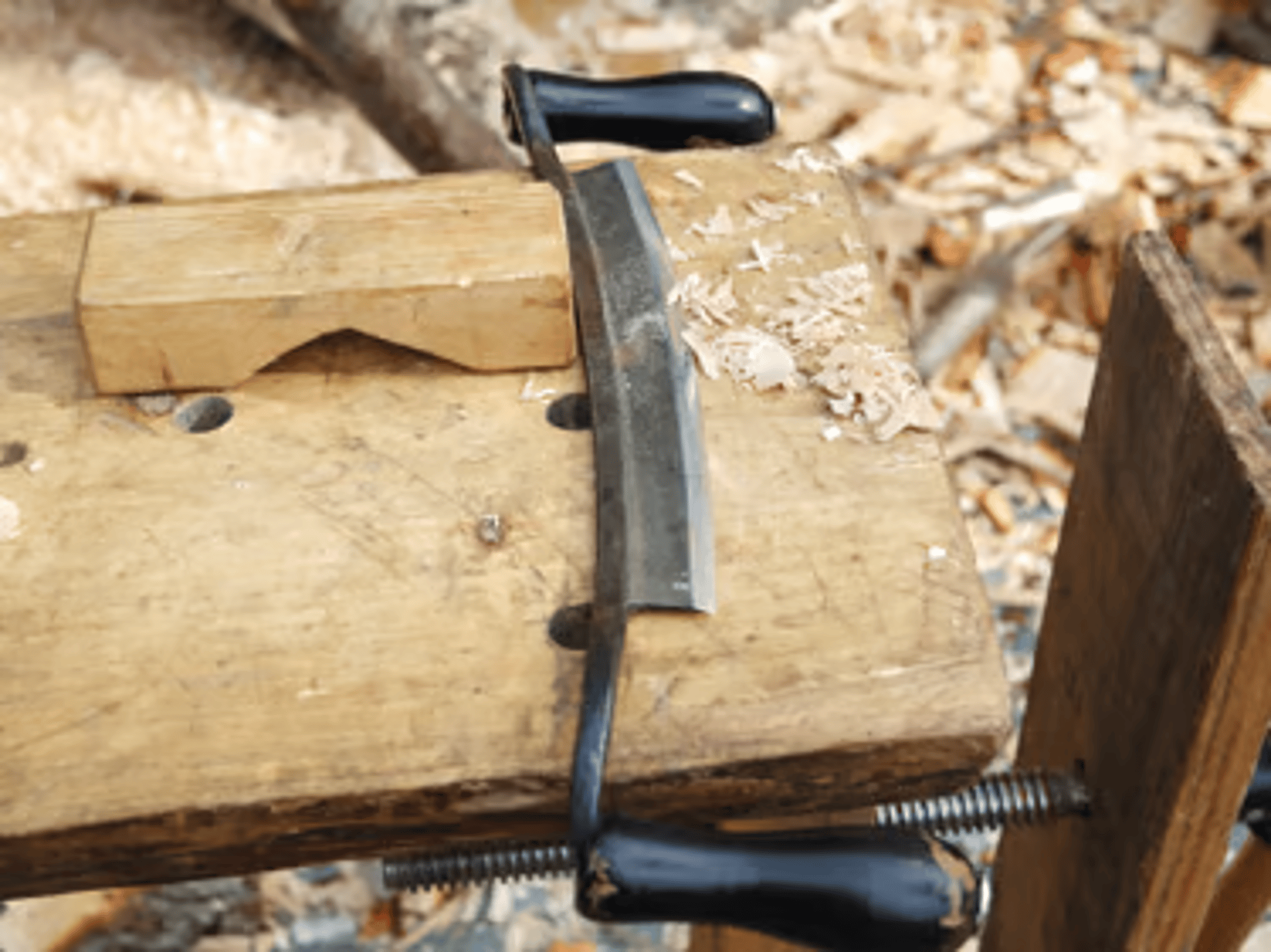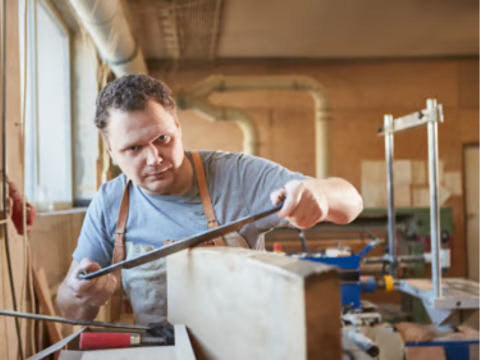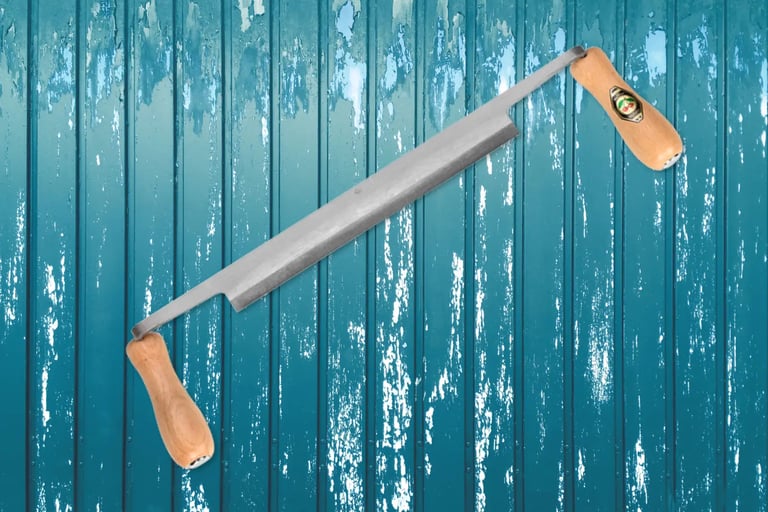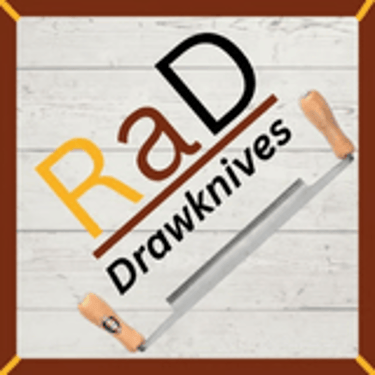
A drawknife is a timeless woodworking tool trusted by craftsmen for centuries. With its sharp, straight or slightly curved blade and comfortable dual handles, this tool is perfect for shaving, shaping, and smoothing wood with control and precision.
Designed for efficiency, the drawknife’s long cutting edge allows you to remove bark, pare down rough timber, and refine surfaces quickly while maintaining accuracy. Whether you’re preparing logs for carving, shaping chair legs, or smoothing planks, the drawknife makes the work faster and more enjoyable.
Its ergonomic design ensures a secure grip, giving you complete control as you pull the blade toward yourself, creating clean, even cuts. Perfect for traditional woodworking, furniture making, green woodworking, and decorative carving, this tool adapts to both large-scale shaping and fine detail work.
Durable and easy to maintain, the drawknife is a reliable addition to any workshop. Suitable for both beginners discovering the art of hand tools and skilled woodworkers seeking precision, it bridges tradition with modern craftsmanship. Bring authentic woodworking techniques to your projects with the versatility and dependability of a drawknife.
Our drawknives are built from premium steel, offering exceptional sharpness, strength, and reliability. Designed to tackle a wide range of woodworking tasks, they make light work of stripping bark, shaping beams, carving didgeridoos, or crafting traditional bows with accuracy and control.
Ideal for both skilled artisans and beginners, these drawknives combine comfort and precision. Ergonomic handles provide a steady grip, while the finely sharpened blade allows for smooth, effortless cuts.
Durable, efficient, and easy to handle, our drawknives are an essential tool for any workshop — helping you shape and refine wood with confidence and skill.
Originally referred to as “drawing knives,” drawknives are traditional woodworking tools designed with a flat or curved blade available in different sizes. The blade, usually chisel-shaped in cross-section, features a bevel-ground cutting edge. Tapered tangs at each end are fitted with wooden handles, allowing the user to pull the blade toward themselves — which gives the tool its name, drawknife.
These tools have been used by craftsmen for centuries and across many cultures. In medieval Russia, drawknives were commonly employed to smooth wood surfaces after rough shaping with an axe or adze. One remarkable historical example, dating back to around 100 AD, is part of a Viking shipwright’s toolkit now displayed at the State Historical Museum in Stockholm.
While they are rarely depicted in medieval Western European illustrations, drawknives were nonetheless essential in a wide range of trades. Bowyers, wheelwrights, carpenters, clog makers, turners, and joiners all relied on them for precision shaping and control. Today, their timeless design and practical functionality continue to make the drawknife an indispensable tool in both traditional craft and modern woodworking.
To get the most out of a drawknife, proper technique is essential. Begin by working from the center of the piece toward the ends. This method provides greater control, minimizes tear-out (especially with difficult grain), and allows for a more precise cut. After one side is shaped, reverse the workpiece and repeat the process from the center outward to achieve symmetry and a balanced finish.
A light, final scraping pass is key to achieving a refined surface. Though often overlooked, this step helps remove small irregularities and leaves the wood smooth and even — ideal for finishing or fitting.
Once the bark and excess material are removed, carefully go back over the surface with gentle strokes to create a consistent, uniform result. By following these steps, your finished piece will be smoother, more attractive, and of higher quality.
What are Drawknives?
Using a Drawknife: Technique for Best Results
The History and Design of the Drawknife








How to Use and Sharpen a Drawknife Maintenance
A drawknife is a timeless woodworking tool trusted by craftsmen for centuries. With its sharp, straight or slightly curved blade and comfortable dual handles, this tool is perfect for shaving, shaping, and smoothing wood with control and precision.
Designed for efficiency, the drawknife’s long cutting edge allows you to remove bark, pare down rough timber, and refine surfaces quickly while maintaining accuracy. Durable, ergonomic, and versatile, it’s an essential tool for both traditional and modern woodworking projects.
Features:
Sharp, durable steel blade for clean, precise cuts
Dual ergonomic handles for comfort and control
Long cutting edge ideal for shaving and smoothing wood
Traditional design used by woodworkers for centuries
Suitable for both rough shaping and fine detailing
Uses:
Removing bark from logs and branches
Shaping timber for furniture and green woodworking
Smoothing surfaces before turning or carving
Crafting chair legs, tool handles, and decorative elements
Ideal for both beginners and skilled artisans
Specifications:
Blade: Straight or slightly curved (varies by model)
Handles: Hardwood or composite, designed for a secure grip
Size: Available in multiple lengths to suit different tasks
Maintenance: Easy to sharpen and care for
Bring authentic woodworking techniques to your workshop with the versatility and dependability of a drawknife.
Drawknife – Essential Woodworking Hand Tool for Shaping and Smoothing
High-Quality Drawknives for Versatile Woodworking
Q: What is a drawknife used for?
A drawknife is a traditional woodworking hand tool used for shaving, shaping, and smoothing wood. It’s ideal for removing bark, rough shaping logs or beams, carving didgeridoos, crafting bows, and preparing wood for turning.
Q: How do you use a drawknife properly?
Hold the drawknife by both handles and pull it toward you, applying steady, controlled pressure. For best results, start from the center of the workpiece and move toward the ends to reduce tear-out and maintain symmetry.
Q: What types of projects can I use a drawknife for?
Drawknives are versatile and used in furniture making, green woodworking, boat building, traditional crafts, carving, and general timber shaping.
Q: What sizes of drawknives are available?
Drawknives come in various blade lengths, typically between 4" and 12". Smaller drawknives are ideal for detailed work, while larger ones are better for removing more material quickly.
Q: How do I maintain a drawknife?
Keep the blade sharp using a whetstone or sharpening system, oil it lightly to prevent rust, and store it in a dry place. Wooden handles may also be treated with linseed oil to extend their life.
Q: Is a drawknife suitable for beginners?
Yes. While they require some practice, drawknives are safe and highly effective hand tools for beginners learning traditional woodworking techniques.
Drawknife: Frequently Asked Questions
Here's what our customers say
The product is high quality and was ready to work straight out of the box.
Draw Knife 250mm Straight German Made Drawknives Drawing Knife Draw Shave
- Redwineotter
A1 Seller. Top quality items. Fast postage and awsome packaging.
Draw Knife 250mm Straight German Made Drawknives Drawing Knife Draw Shave
- Possumchair
Great service and fantastic prices to boot. thanks guys
KIRSCHEN Scorp Drawknife - 77mm Diameter
- Brubyute
Geat buy. Very happy customer aaa+++
German Made Kirschen Straight Draw Knife - 225mm
-Steven Beir
